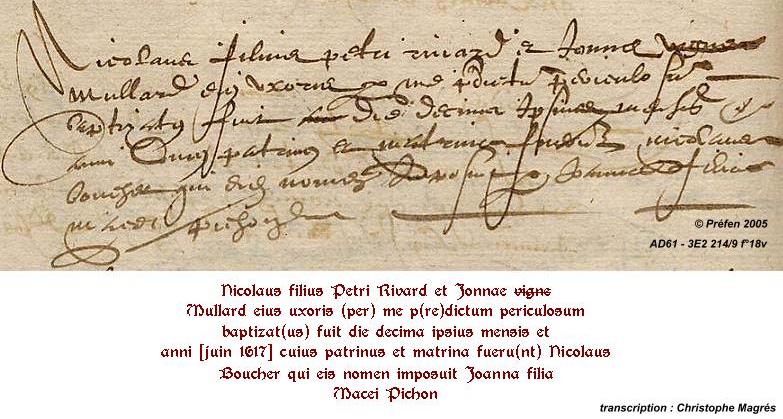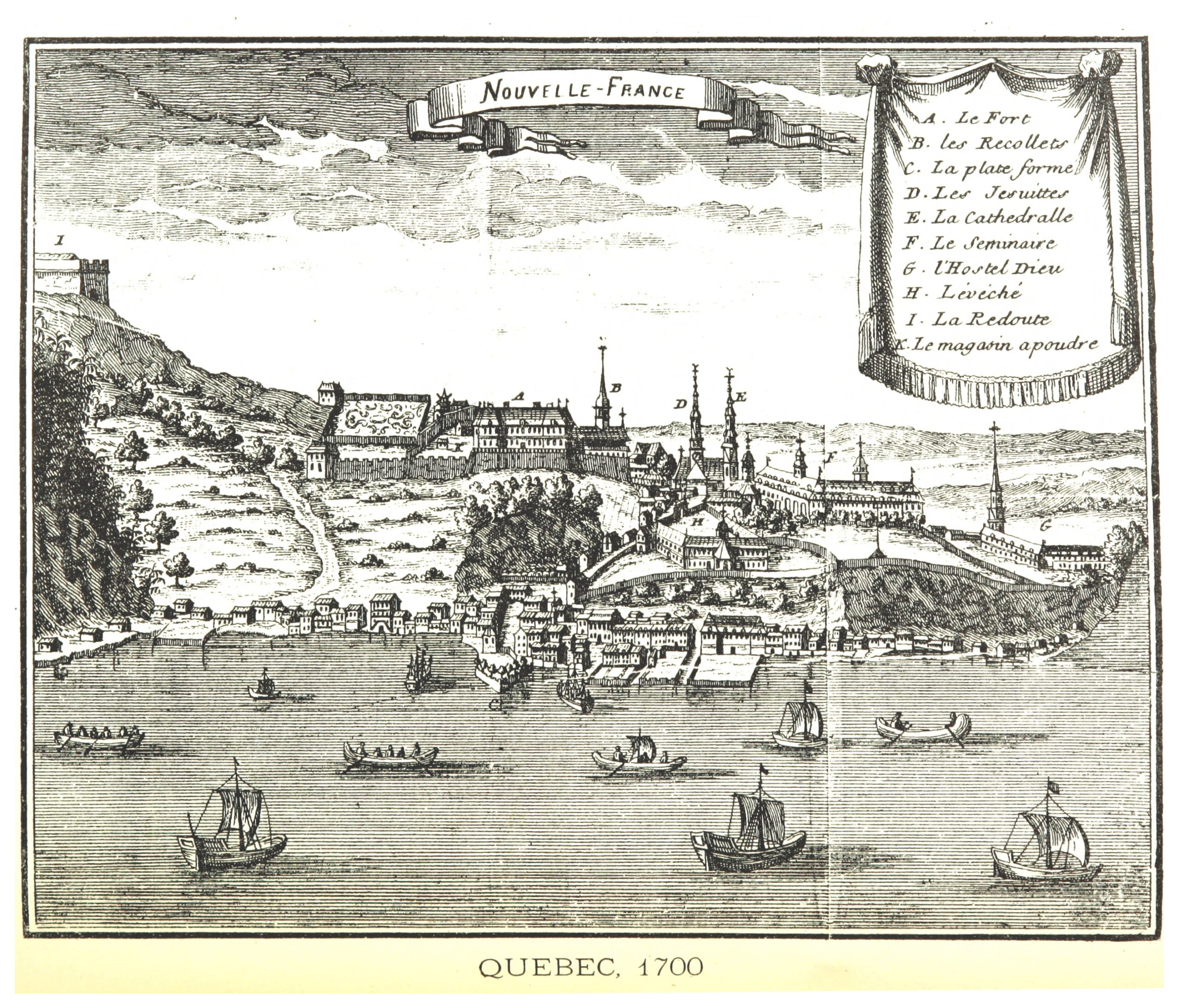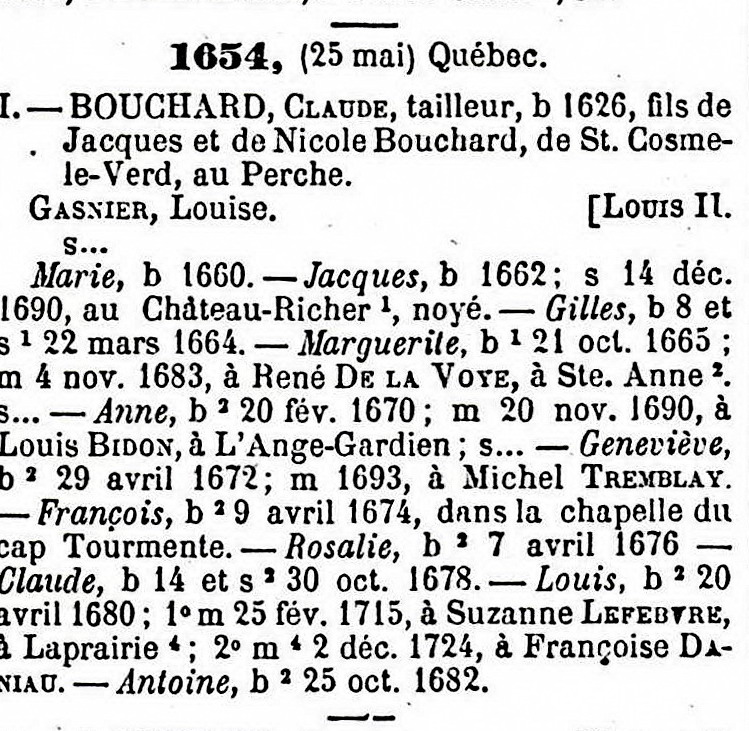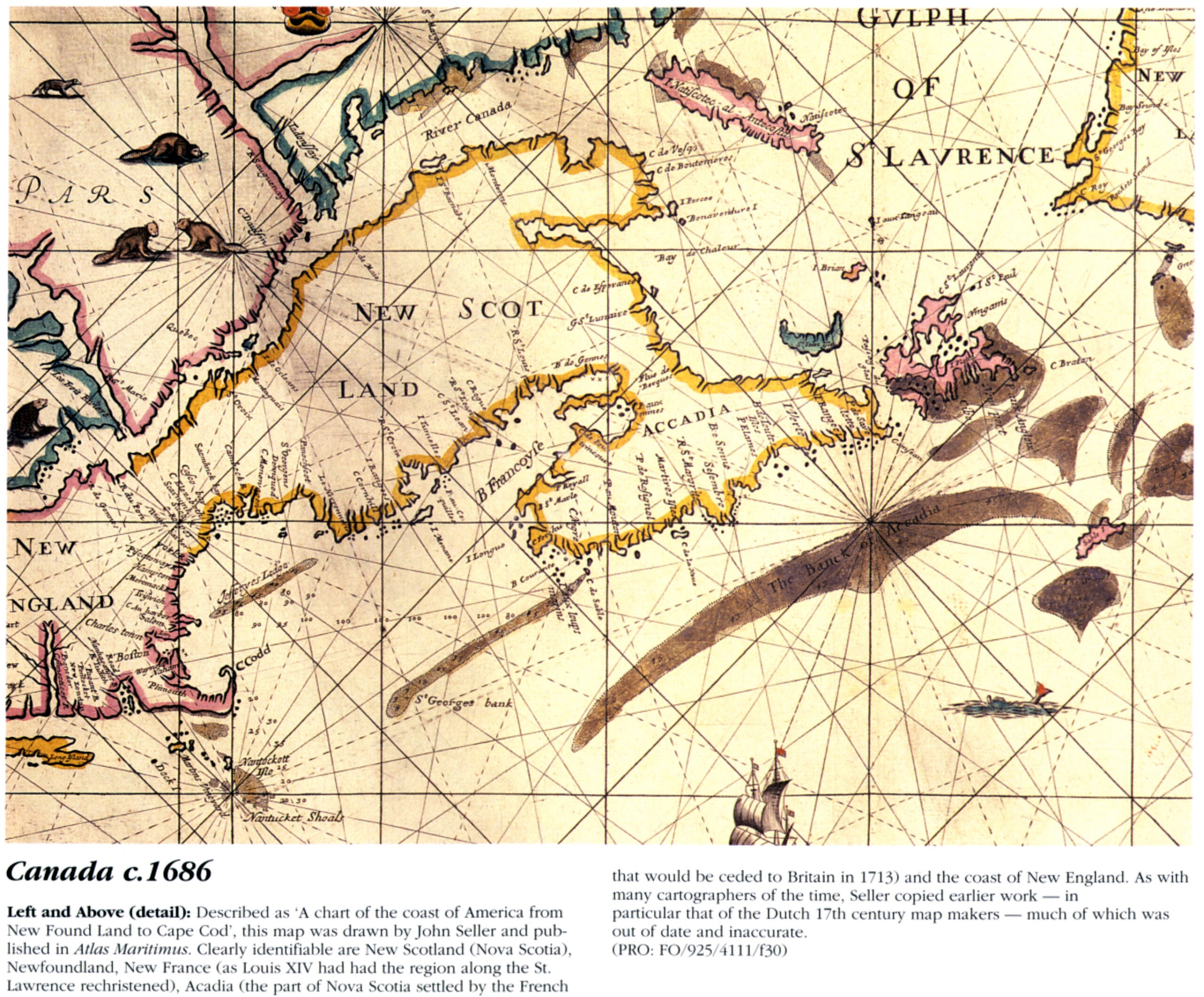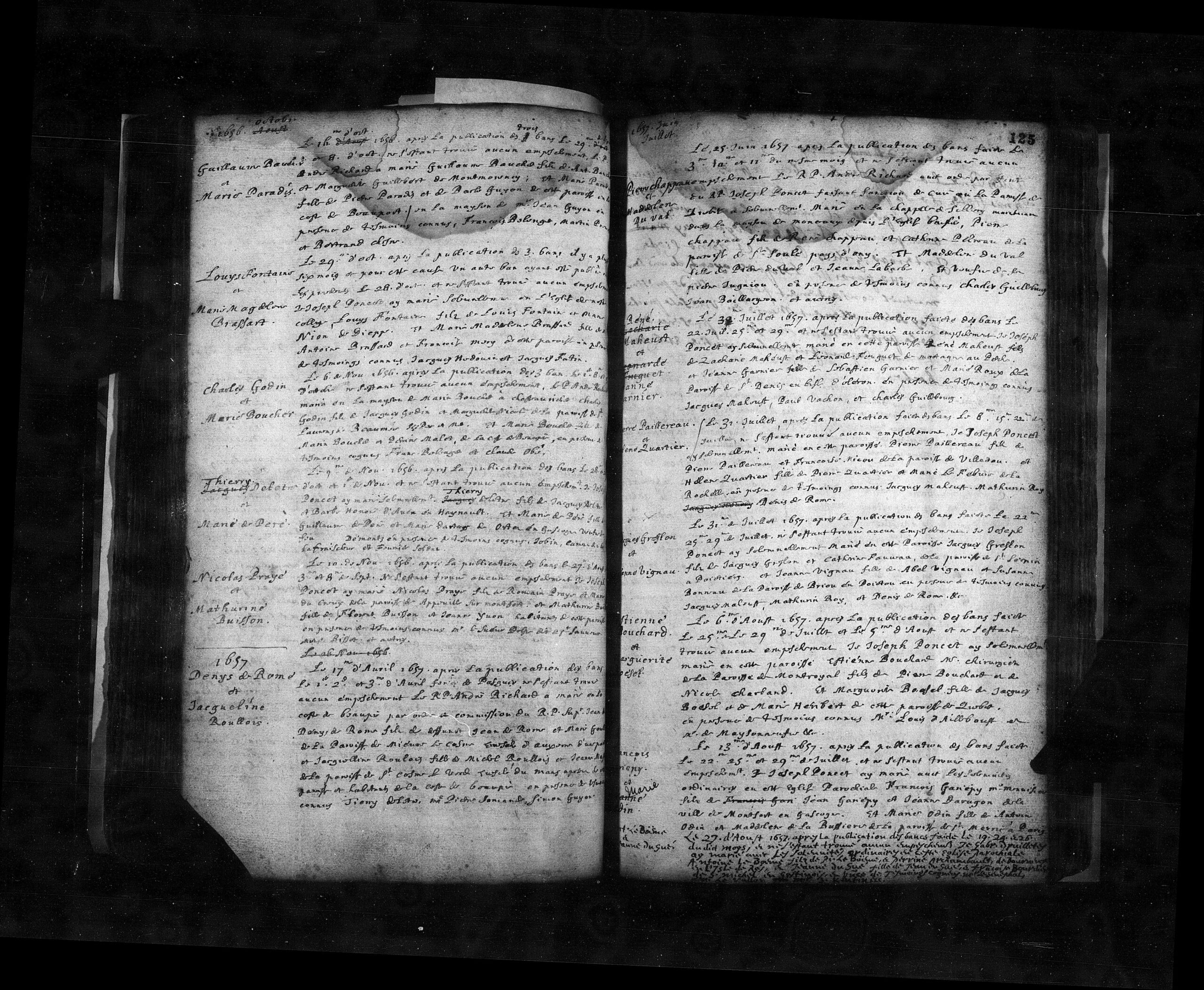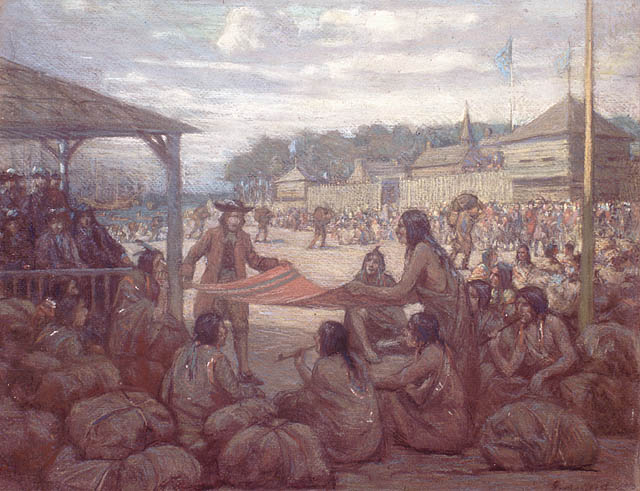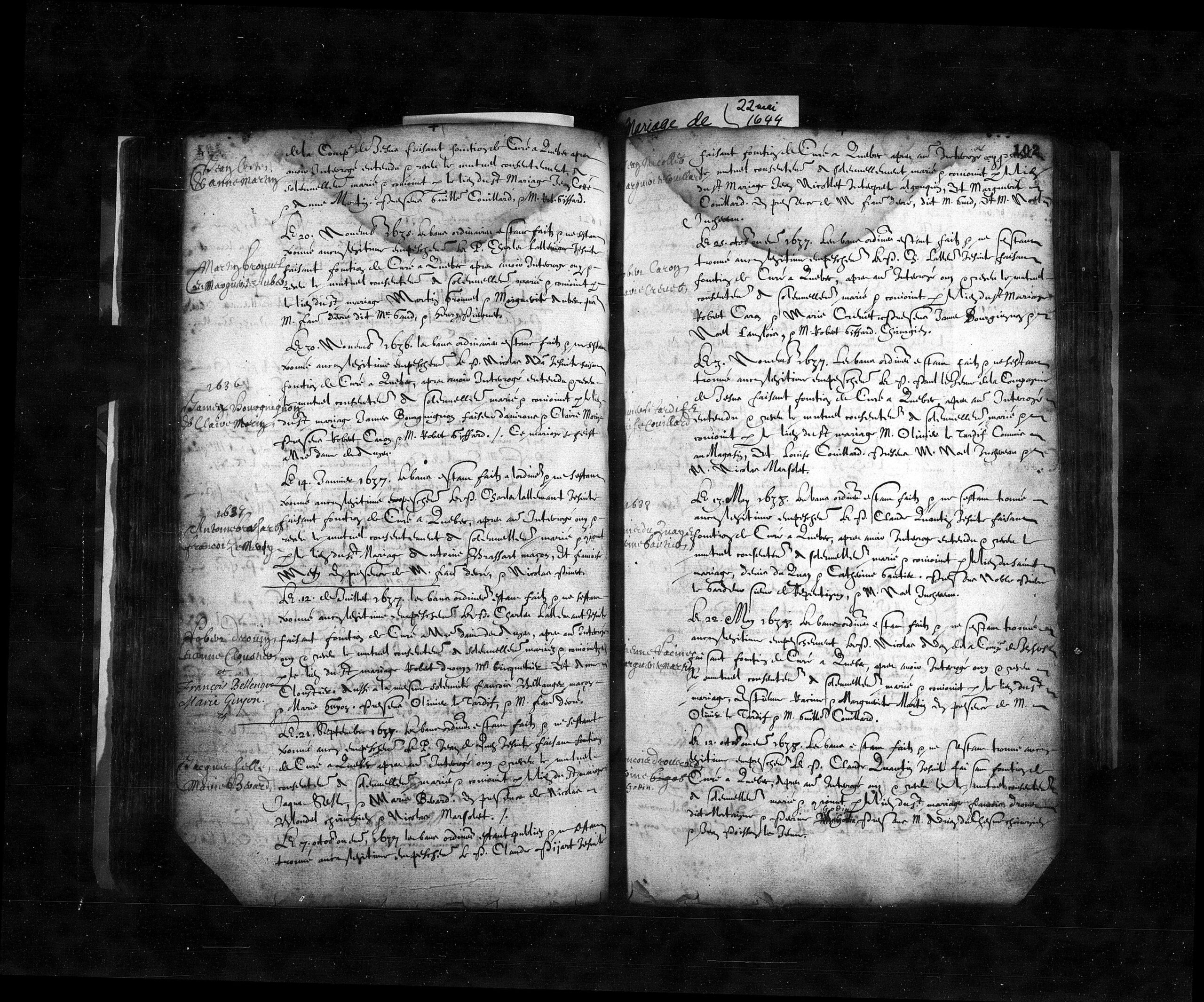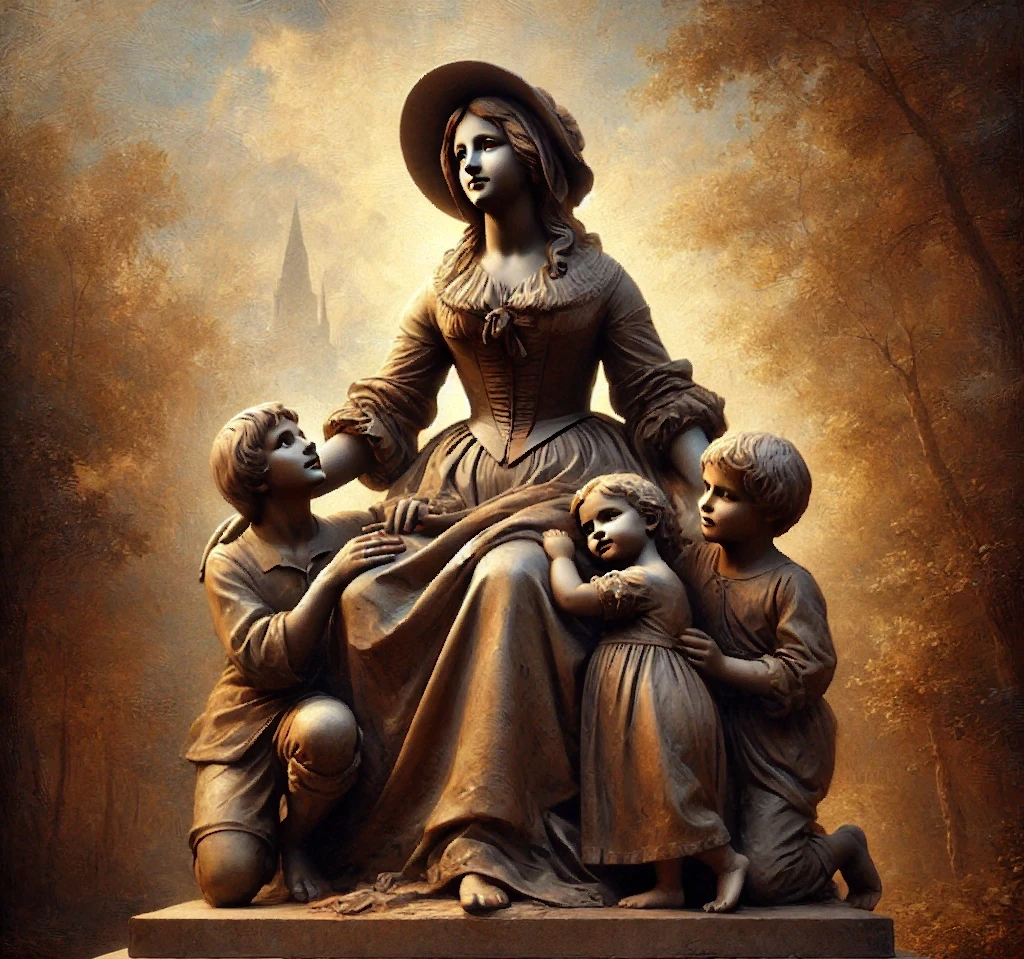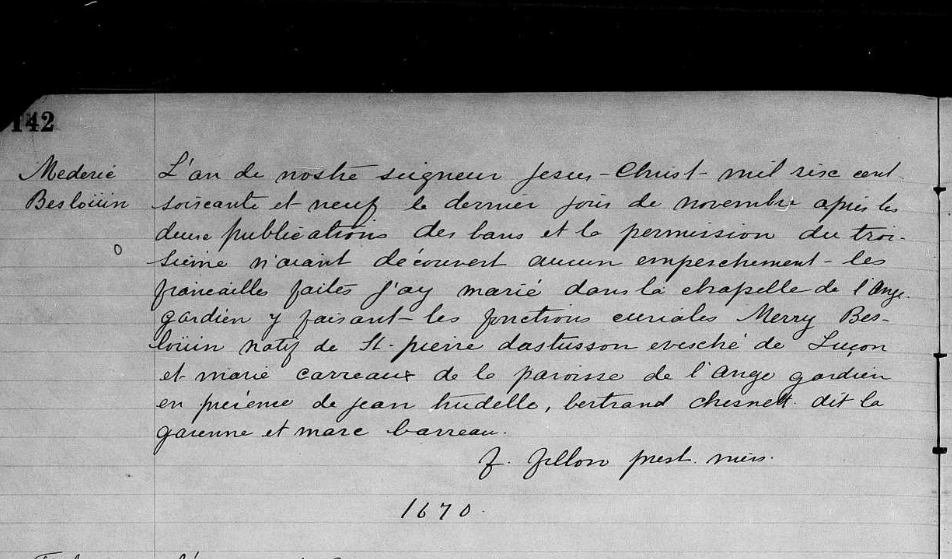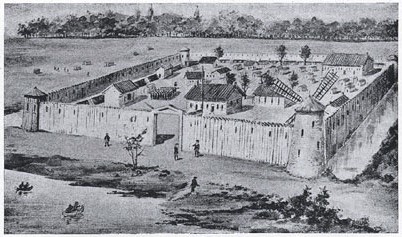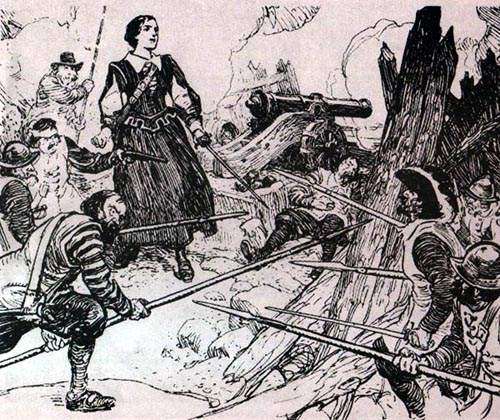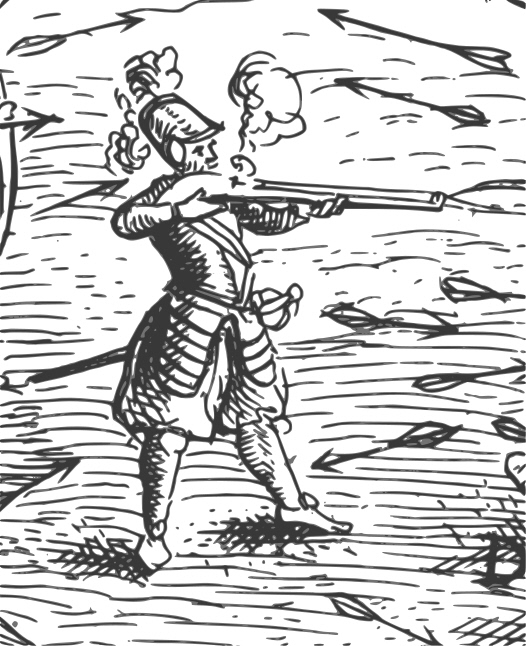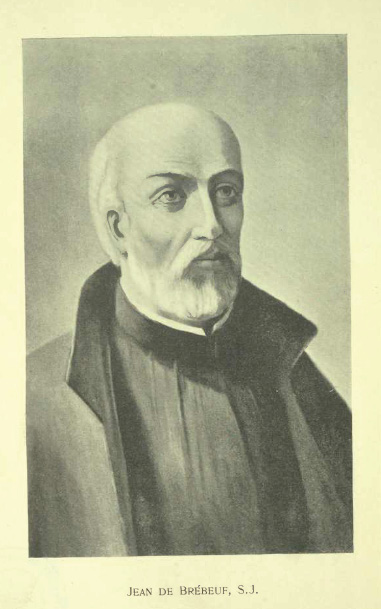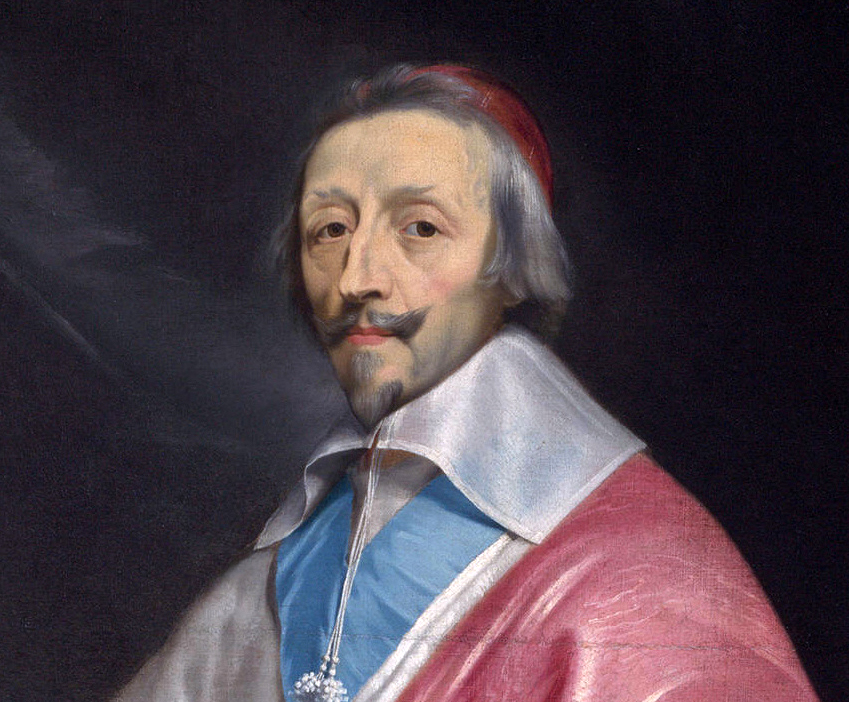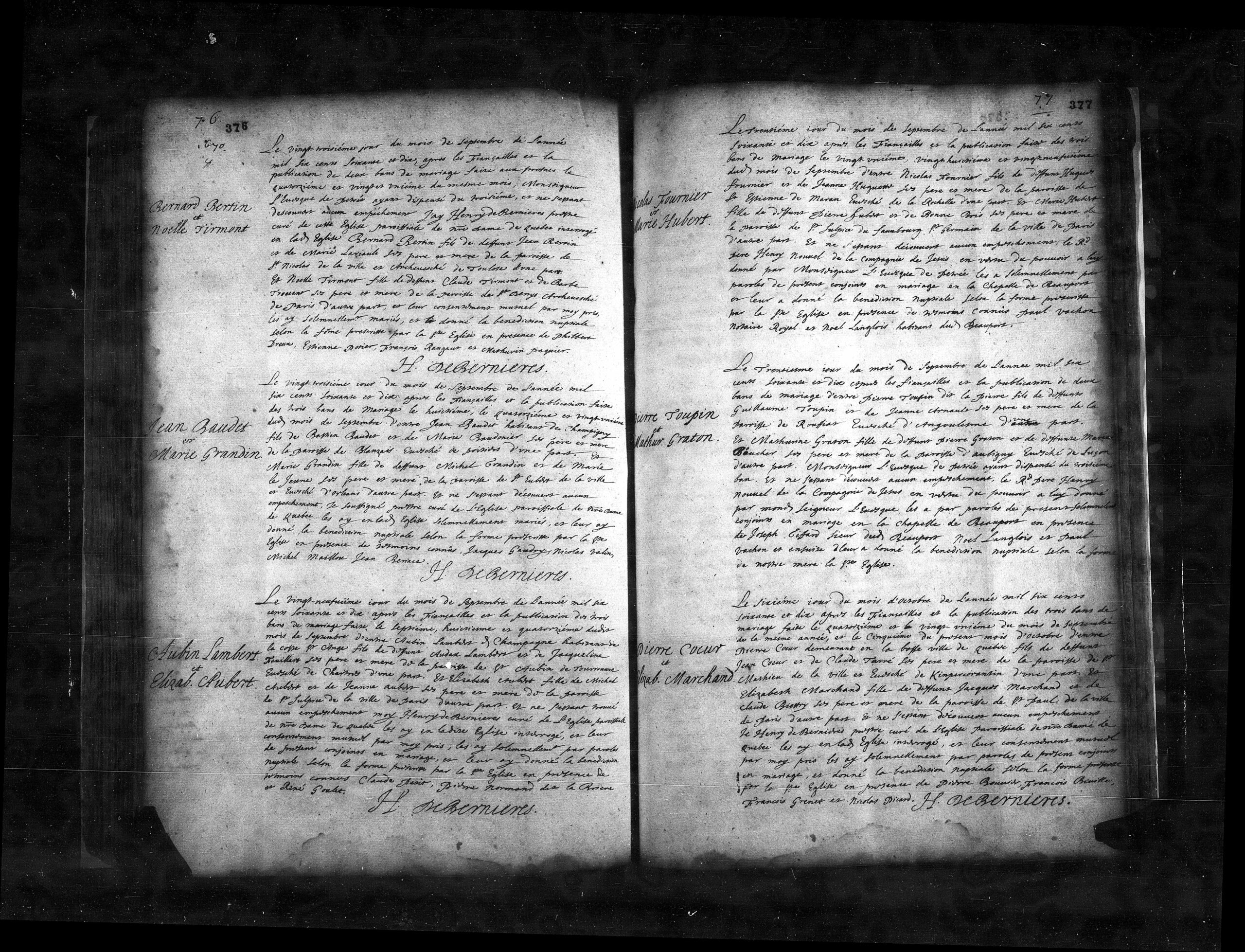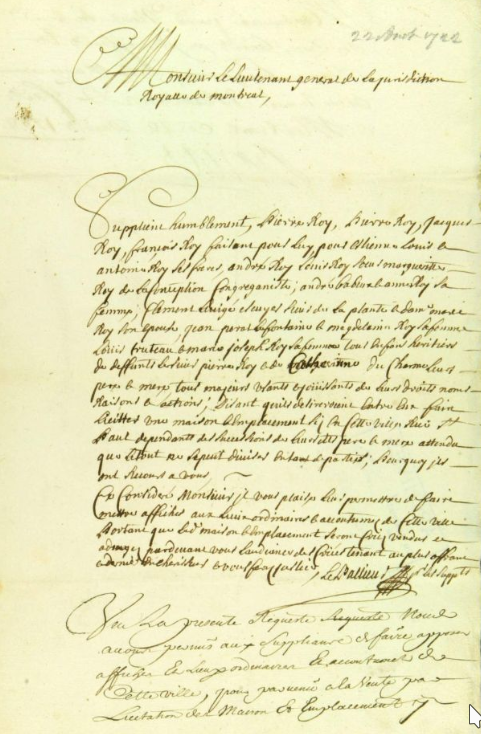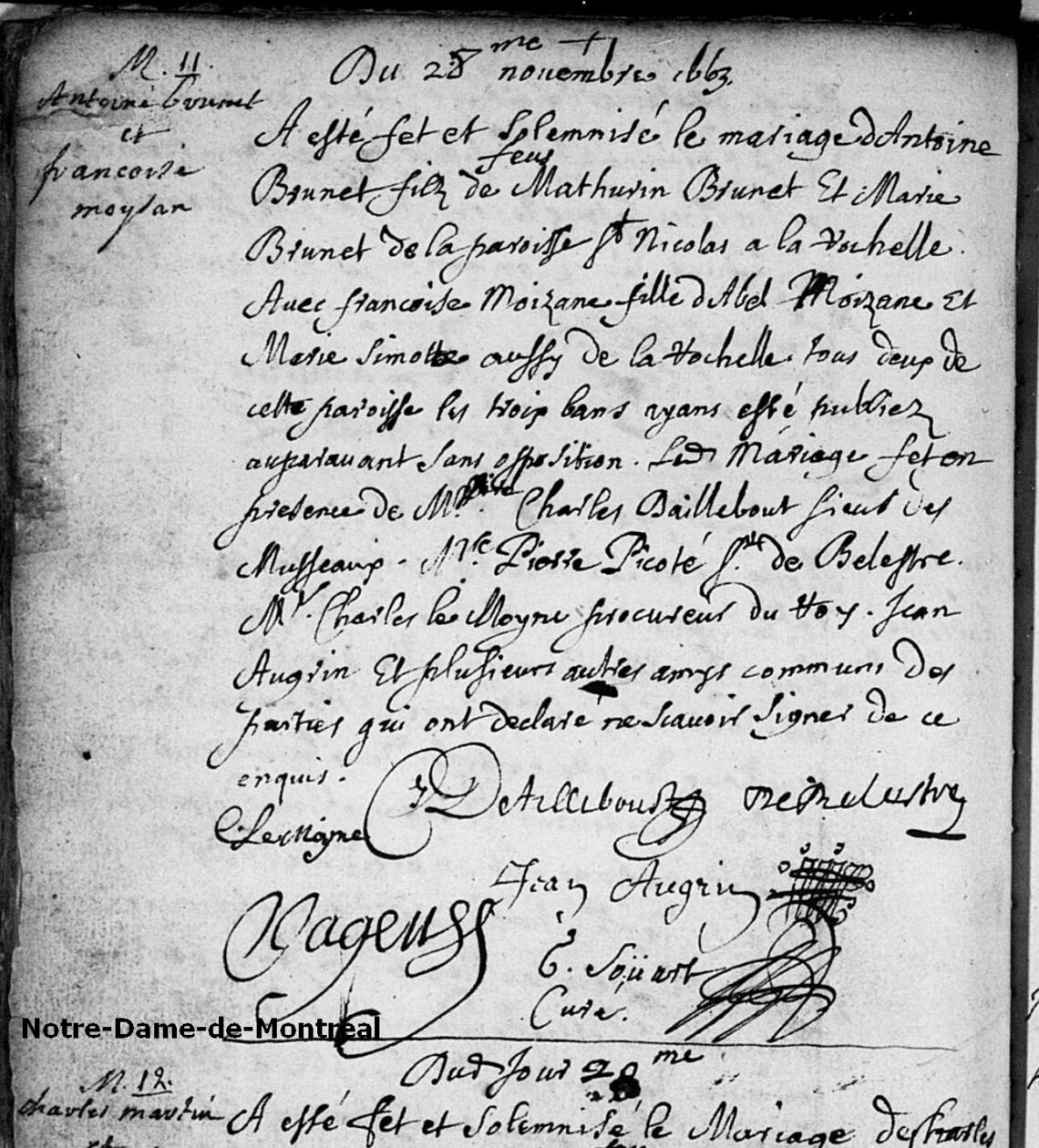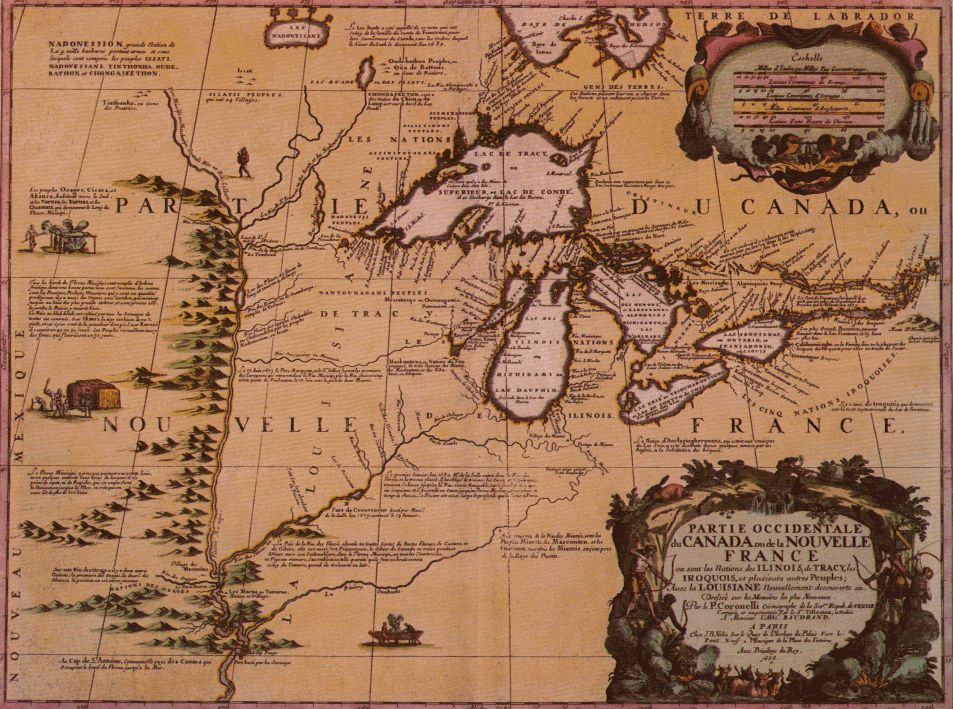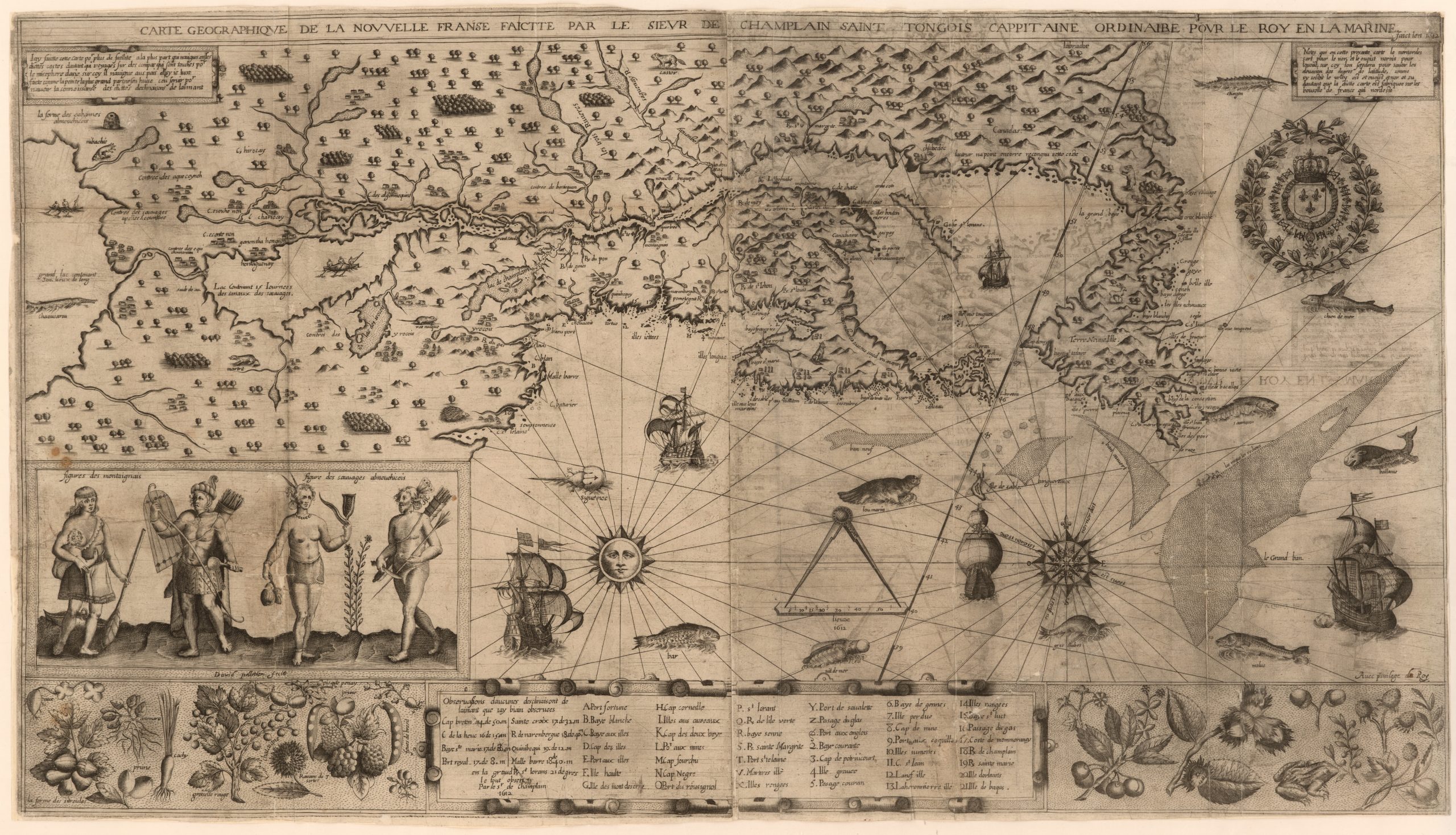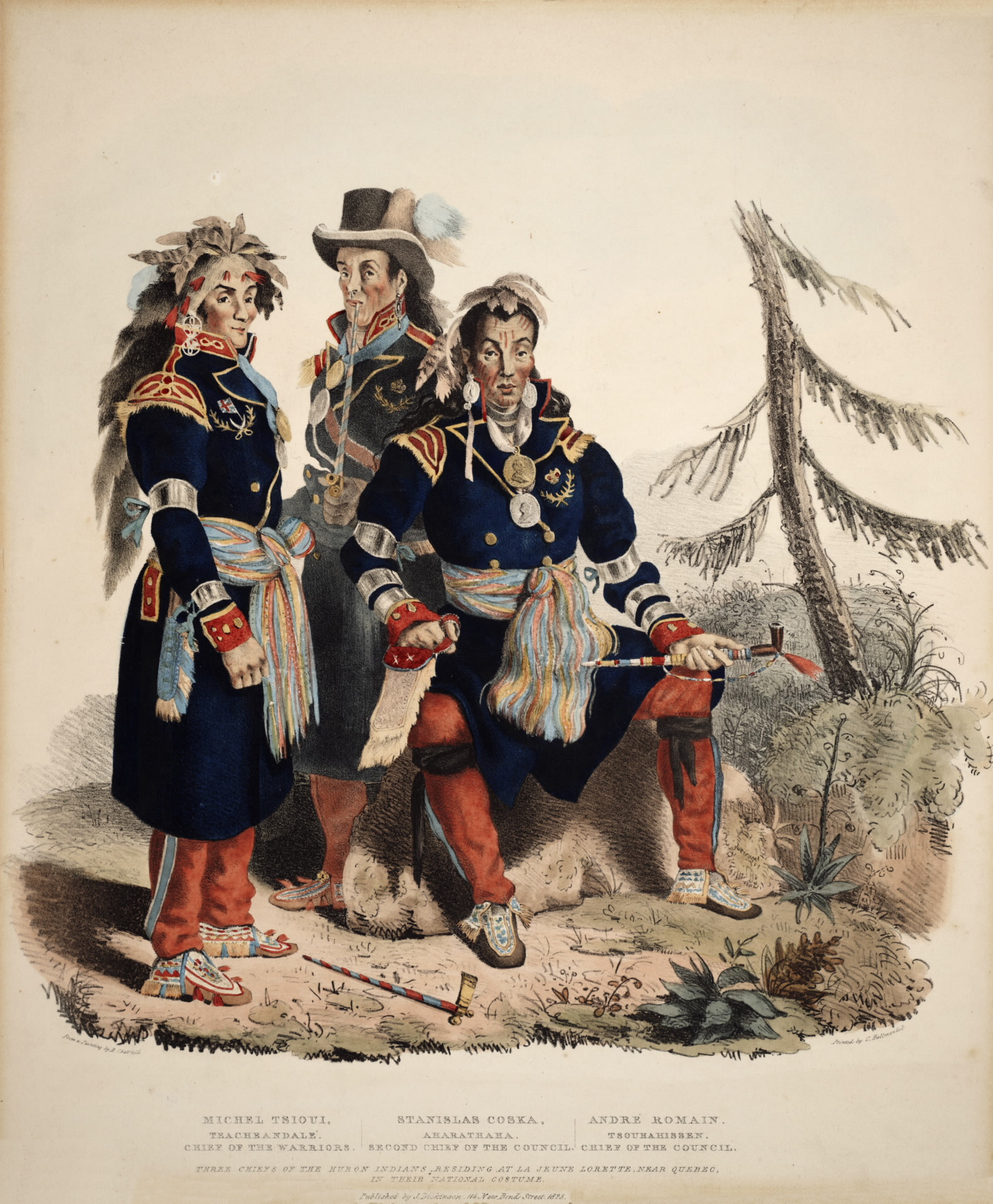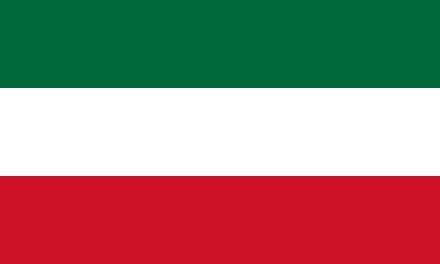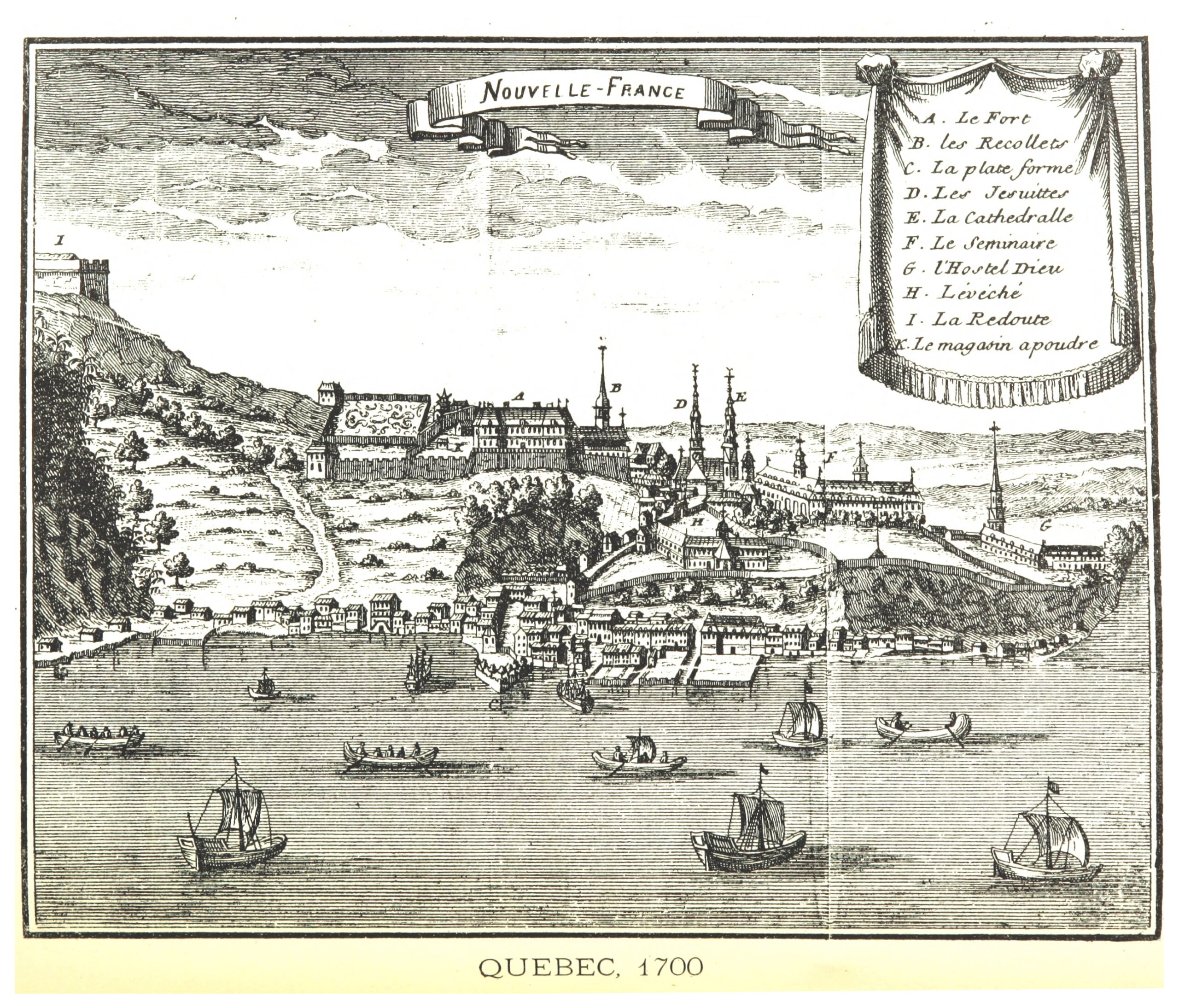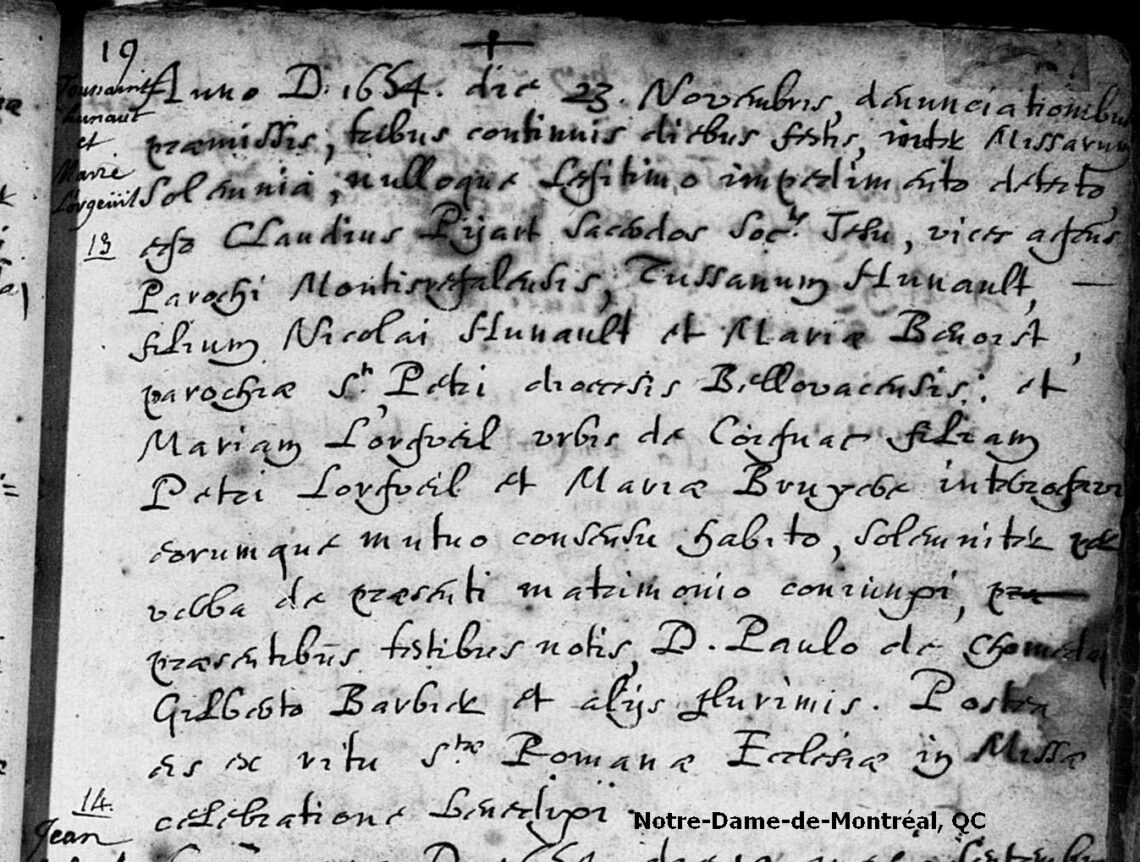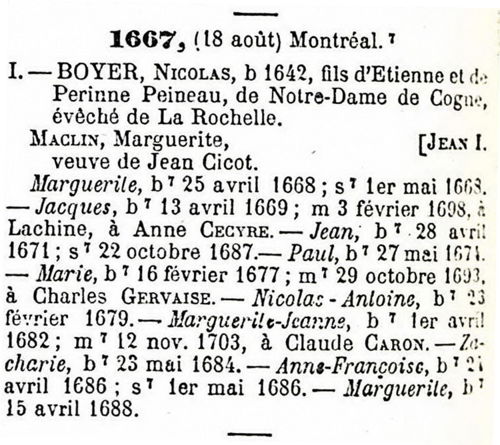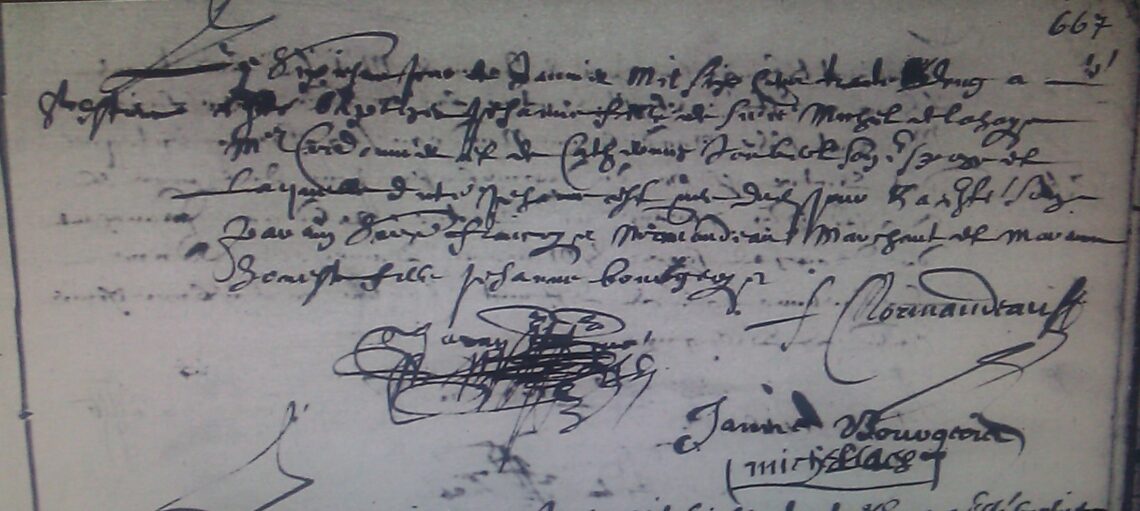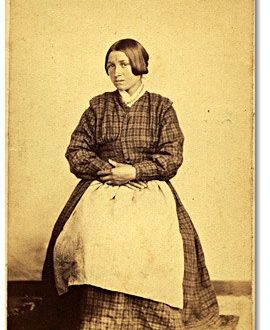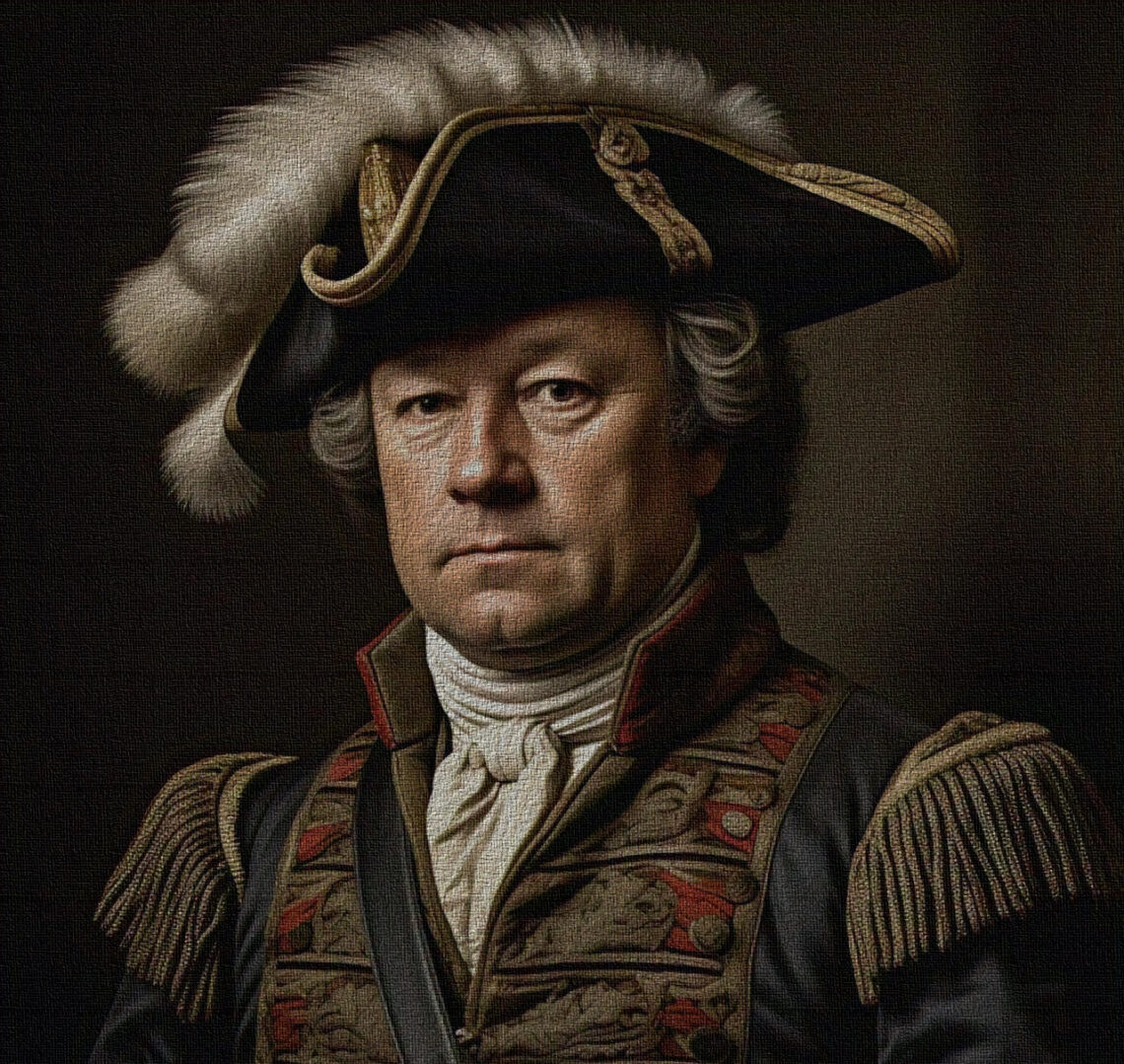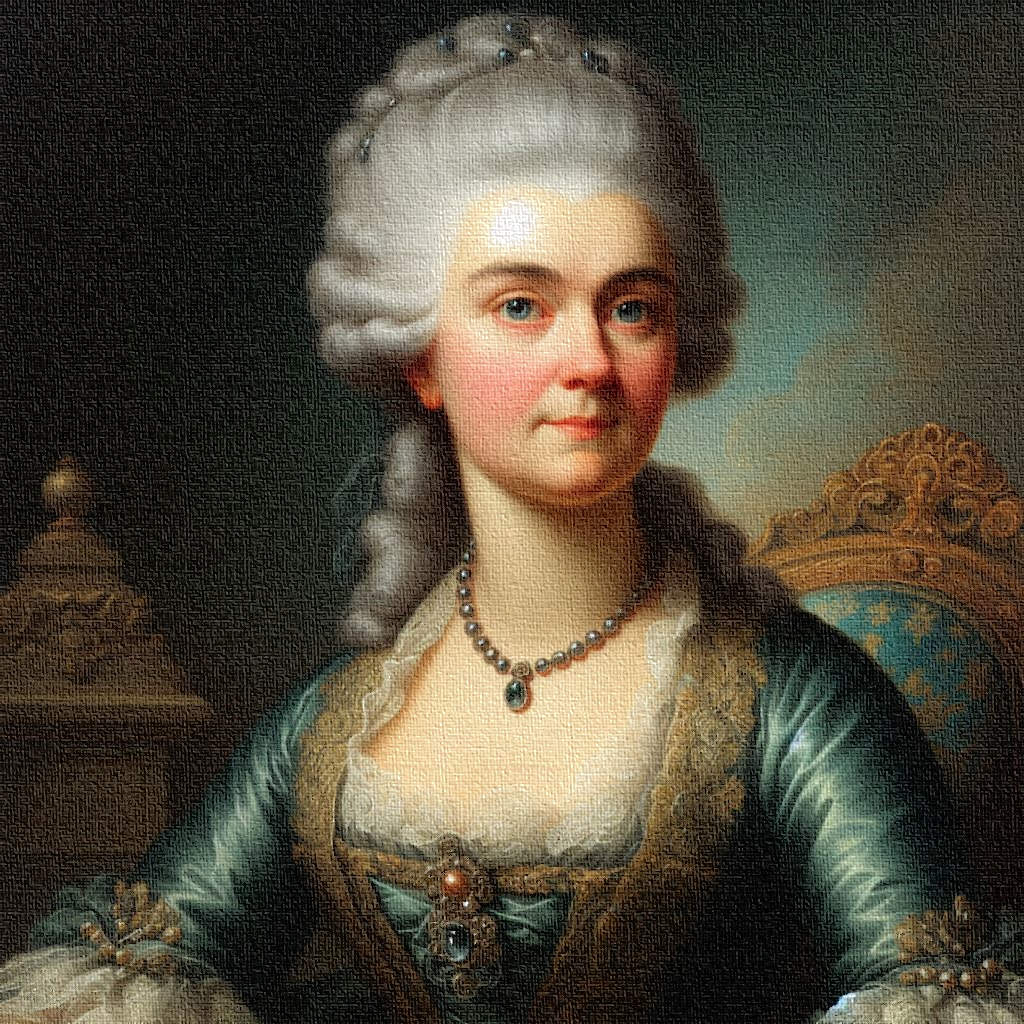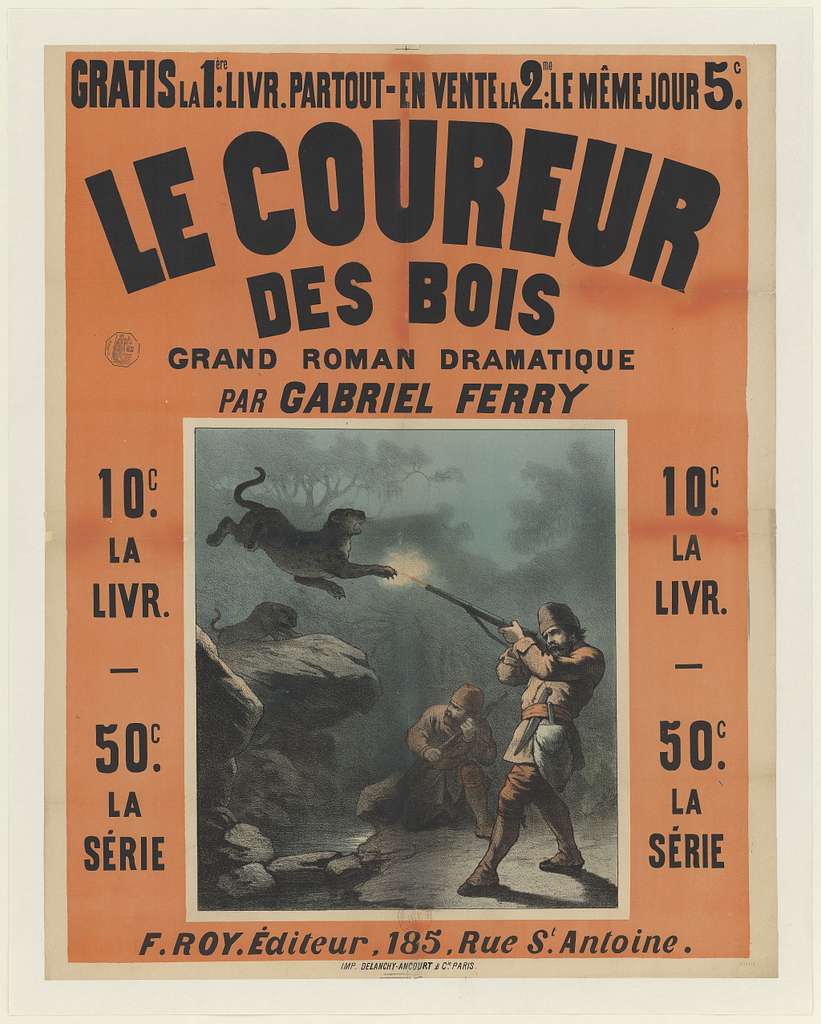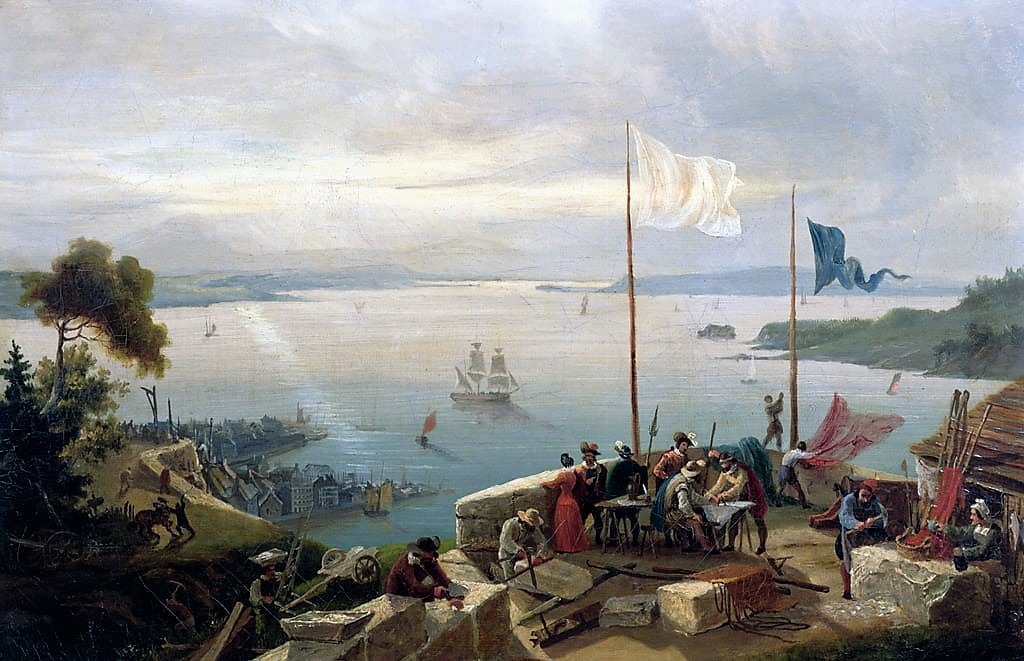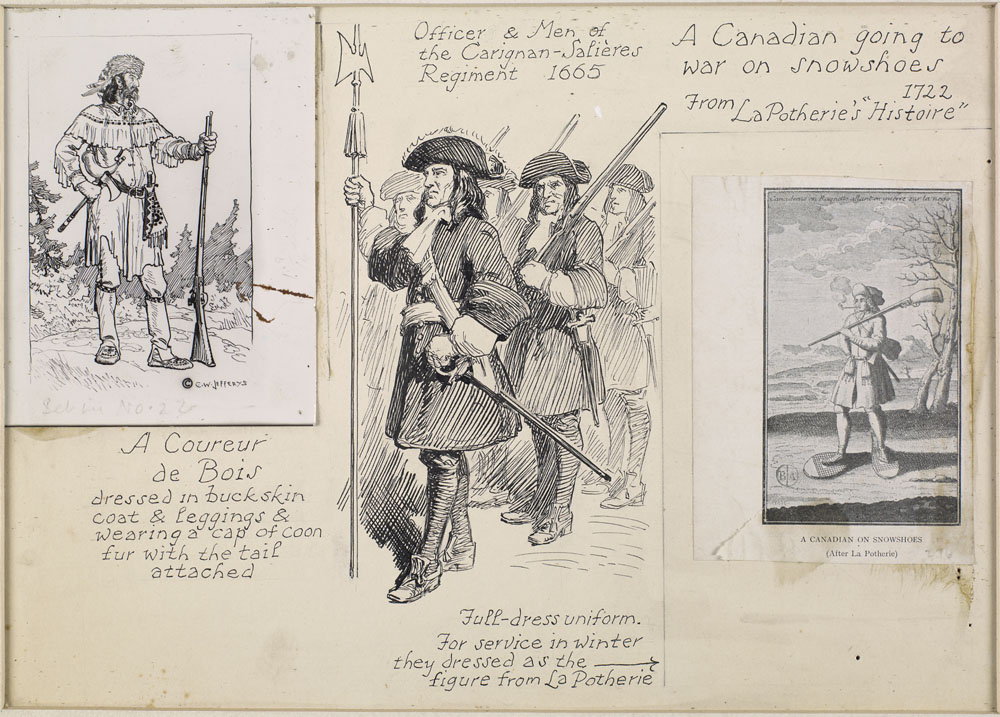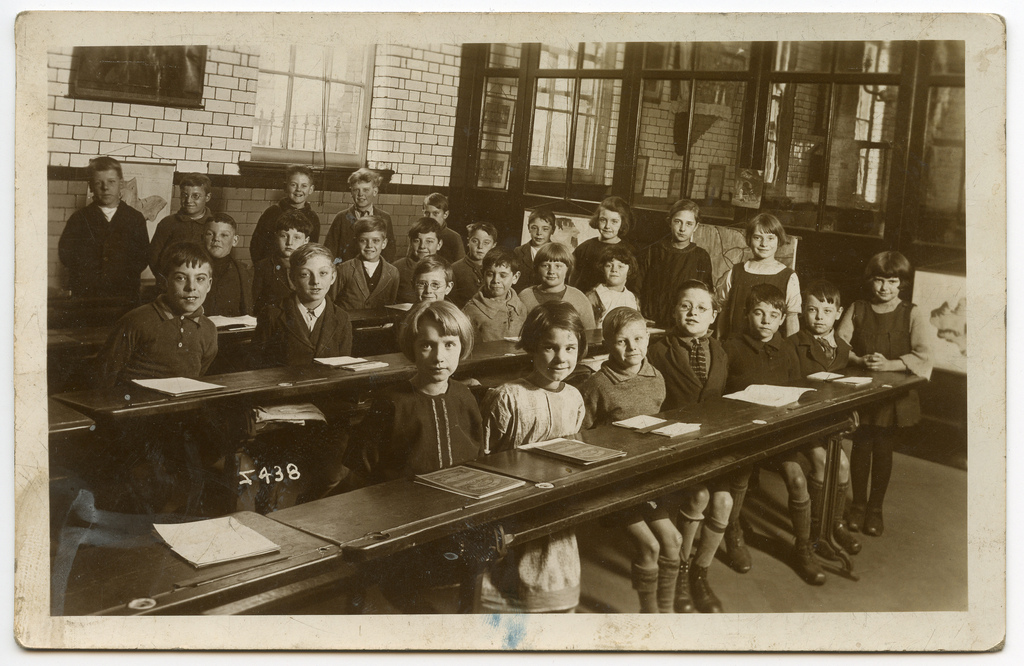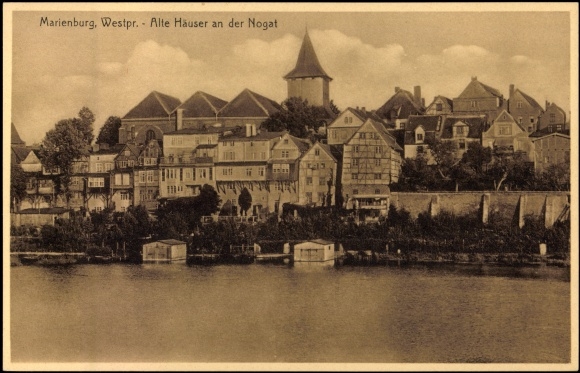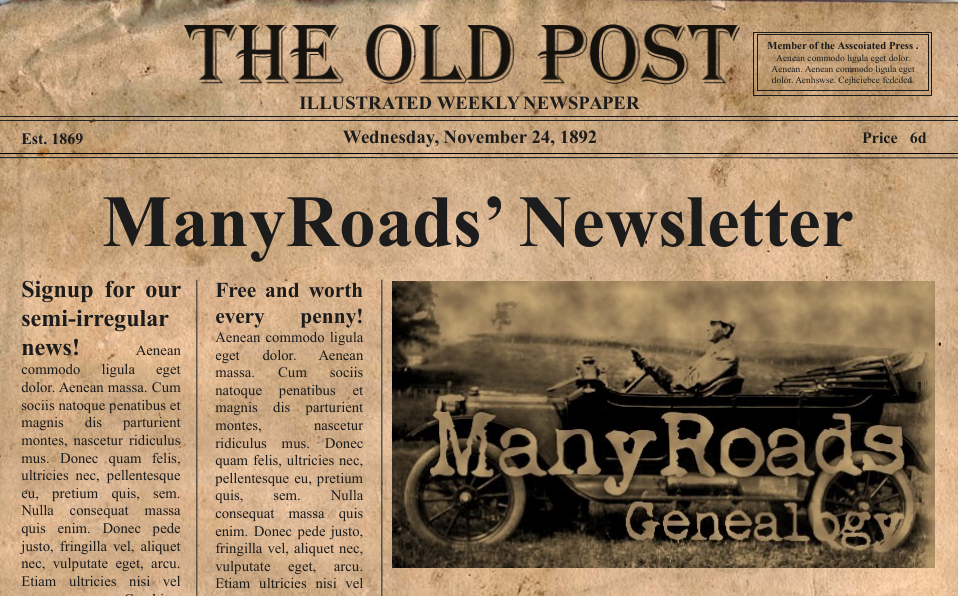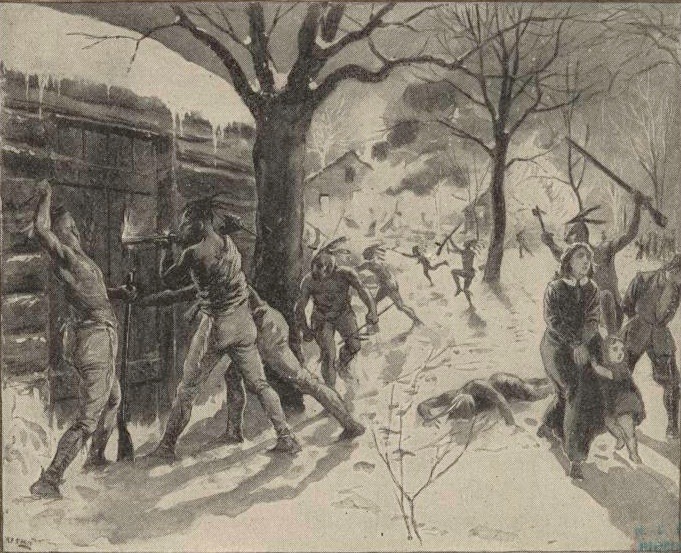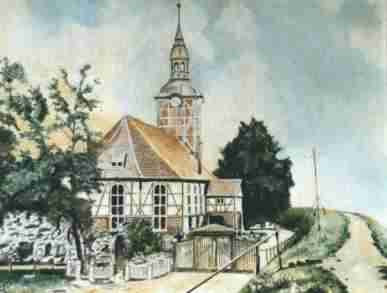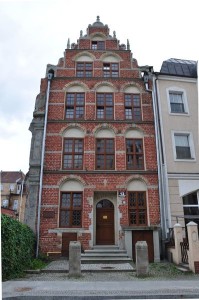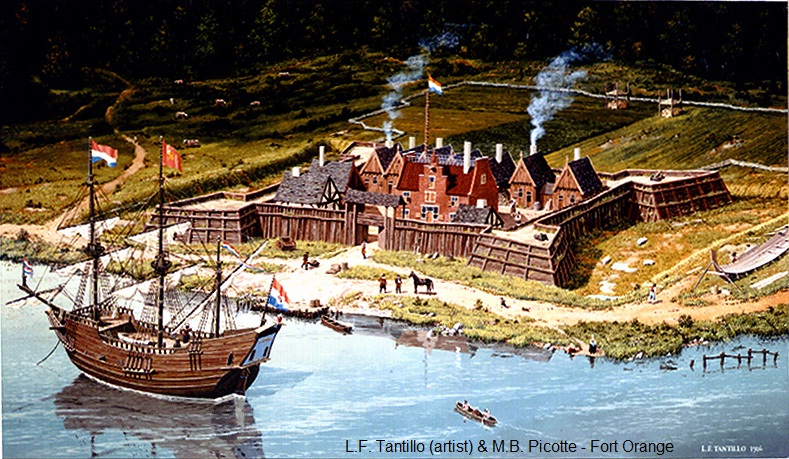Quebec & Canada
-
Marie Pinet de la Chenaye & Pierre Masse
-
Marie Armand & Guillaume David
-
Catherine St-Père & Nicolas Rivard dit Lavigne
-
Jeanne Testard & François Leber
-
Louise Gagné (Gasnier) & Claude Bouchard
-
Catherine Caron & Jacques Dodier
-
Charles Godin & Marie Boucher
-
Noël Langlois & Françoise Grenier
-
Settlers & Colonists of New France
The Company of One Hundred Associates (Compagnie des Cent-Associés) was obligated by its charter to transport and establish 4,000 settlers in New France between 1628 and 1643. While the company fell far short of this goal, it did facilitate the immigration of several hundred colonists who formed the core of French settlement in North America. Early Settlement Patterns The First Families Louis Hébert (1575-1627) and Marie Rollet (1580-1649) Though they arrived before the Company of One Hundred Associates was formed, the Hébert family is considered the first permanent French farming family in Quebec. Louis was an apothecary who became a farmer in Quebec, arriving in 1617. After Louis’s death, Marie…
-
Marguerite Couillard
-
Marguerite Langlois
-
Guillaume Hébert
-
Emery Blouin & Marie Carreau
-
Sieur Clément Lériger de Laplante & His Wife Marie Roy
-
Françoise Hébert & Guillaume Fournier
-
Anne Cloutier & Robert Drouin
-
Soldiers & Navigators of New France
-
Missionaries & Clergy in New France
-
Governors & Officers of the Company of New France
-
Investors & Backers of the Company of New France
-
Charles de Saint-Étienne de la Tour: Early Leader of New France
-
Samuel de Champlain: Explorer & Founder of Quebec
-
Jean de Brébeuf & Other Missionary Figures of the Compagnie de la Nouvelle France
-
Cardinal Richelieu: Founder of the Compagnie de la Nouvelle France
-
Pierre du Gua de Monts (First Governor of New France)
-
Marie Grandin & Jean Baudet
-
Marie Debure & Jean Bernard dit Anse
-
Catherine Ducharme & Pierre Roy
-
Françoise Moisan & Antoine Brunet
-
Ozanne (Anne) Achon and Pierre Tremblay
-
How-to Research New France
New France, the area colonized by France in North America during a period beginning with the exploration of the Saint Lawrence River by Jacques Cartier in 1534 and ending with the cession of New France to Spain and Great Britain in 1763, offers a rich history for genealogists and historians. This guide provides resources to aid your research. I. Understanding the Historical Context Before diving into genealogy, understanding the historical backdrop is crucial. New France encompassed vast territories, and its history is intertwined with French colonization, indigenous relations, and eventual British conquest. Maps Visualizing the extent of New France is essential. Here are some resources: Key Historical Periods II. Genealogical…
-
Marie-Anne Hardy & Pierre Mallet
-
Marie Lorgueil & Toussaint Hunault dit Deschamps
Marie Lorgueil & Toussaint Hunault dit Deschamps Marie Lorgueil Original name: Orgueille (variations: Orgueil, Orcüeil) Biography Born in Bordeaux (Ste-Croix parish), Guyenne (Gironde), on June 14, 1634, and baptized the following day. Daughter of Pierre Orgueille and Marie Bruelle. Godparents: Claude __ (illegible) and Marie Frugeau.12 She arrived in Montreal on November 16, 1653, as part of The Great Recruitment (La Grande Recrue).34 Marriage On November 23, 1654, Marie married Toussaint Hunault dit Deschamps in Montreal. The marriage was officiated by Jesuit priest Claude Pijart. Witnesses included Paul de Chomedey and Gilbert Barbier.56 Neither spouse could sign their names.7 Children Thècle Hunault – Born & baptized September 23, 1655; married…
-
Marguerite Maclin (Maquelin) & Nicolas Bouhier (Boyer)
-
Jeanne Merrin & Henri Perrin
-
Marie Rocheron and François Gaulin
Pioneers of New France Marie Rocheron Marie Rocheron was baptized on April 21, 1639, in Saint-Cosme-de-Vair (now Saint-Cosme-au-Vairais), Perche, France. She was the daughter of Julien Rocheron and Martine Lemoyne, and her godparents were Marin Fortin and Marie Le Sallier. [1, 8, 9, 10] Marie migrated to New France in 1657, accompanied or followed by her brothers Gervais and Simon. [6, 11] François Gaulin François Gaulin was baptized on August 25, 1630, in Saint-Martin-du-Vieux-Bellême, Perche, France. He was the son of Vincent Gaulin and Marie Bonnemer, and his godparents were François Huet and Marie Boucher. [11, 12, 13, 14, 15] François migrated to New France around 1652. His sister Marguerite…
-
The Lachine Massacre (August 4-5, 1689)
The Lachine Massacre was a devastating attack on the French settlement of Lachine, located near modern-day Montreal, on the nights of August 4-5, 1689. A force of approximately 1,500 Iroquois warriors, motivated by longstanding tensions with the French, territorial disputes, and revenge for prior French military actions against their villages, launched the assault. The massacre began as soon as the Iroquois warriors landed at Lachine. Armed with both firearms and traditional weapons, they struck swiftly and mercilessly. Over the course of the night and into the early morning hours, two hundred French settlers and soldiers were killed, while another one hundred and twenty were captured. The Iroquois did not discriminate…
-
Moise Dupuis & Marie Anne Christiaanse
Moise Dupuis (1673-1750) Moyse Dupuis was born on 10 July 1673, baptized on the 18th in Québec (ND), son of François Dupuis and of Georgette Richer; his godfather was Moyse Hilaret, his godmother Catherine Marchand, wife of Laurent Nafrichou. Historical ContextDuring the late 17th and early 18th centuries, the fur trade was a significant economic activity in New France. Coureurs de bois, or “wood runners,” were French-Canadian traders and explorers who ventured into the wilderness to trade with Indigenous peoples and collect furs. Moïse Dupuis’s Possible InvolvementWhile I couldn’t find direct evidence that Moïse Dupuis was a licensed coureur de bois, some records suggest he might have been involved in…
-
André Robidou dit l’Espagnol & Jeanne Denote
André Robidou dit l’Espagnol’s story is fascinating, and there’s more to explore. Born around 1640 in Galicia, Spain, André made his way to France, where he worked as a sailor in Nantes before signing a three-year indenture contract to work in New France. He arrived in Québec in 1661 and eventually settled in Laprairie (now La Prairie, Québec). His tale offers another compelling example of the soldiers of the Carignan-Salières Regiment who transitioned from military service to the challenges and opportunities of settler life in New France. His nickname, l’Espagnol (the Spaniard), is intriguing, hinting at a possible connection to Spanish territories, whether through his origins, travel, or perhaps even…
-
Anne Lepere & François Pinsonnault dit Lafleur
-
French-America Resources
The following information, documents and maps are provided to help with research. ManyRoads French-America Libraries Maps: If there are additional resources you wish to see added to our collection, please me know. You may get in-touch with me directly via our contact page.
-
Pierre Desportes
Early Life and Arrival in New France: Pierre Desportes was born around 1594 in Rouen, Normandie, France. Rouen was a significant port and trading hub during this time, which suggests that Desportes may have had some connection to trade or the military. While details about his early family life are scarce, his eventual role as a military officer in New France hints at a background tied to military or administrative service. Researching archival records from Rouen could potentially reveal more about his origins, though access to specialized French archives would be required. Desportes is believed to have arrived in New France in the 1630s, a critical time when the colony…
-
Hélène Desportes
Hélène Desportes is often considered the first French child born in New France. While records are not entirely clear, most historians believe she was born between 1620 and 1621, shortly after her parents arrived in the colony. Her life provides a valuable glimpse into the challenges and experiences of early French settlers in North America. Birth: The baptism record for Hélène Desportes has not been found, but historians believe she was born after July 7, 1620, since baptism records started being kept in 1621. So, her birth is estimated around 1620. Ethel Bennett, in the Dictionary of Canadian Biography, suggests she was “probably the first white child born along the…
-
Searching for Coureur des bois
This document is being built (come back it is changing) Further (in-depth) Research: While a single, definitive list of all Coureurs de bois might not exist (due to the nature of their activities), there are resources that can help you identify them. It’s a matter of piecing together information from various sources. Here’s a breakdown of where to look and what to consider: 1. “Dictionnaire biographique du Canada” (Dictionary of Canadian Biography – DCB): This is an excellent starting point. While it doesn’t list every Coureur des bois, it includes entries for many prominent ones. These entries often provide details about their activities, families, and locations, which can lead you…
-
The Builders of New France
Samuel de Champlain’s arrival in the early 17th century marked a pivotal moment in the history of New France and set the stage for the waves of immigration that would follow, including the Filles à Marier, the Carignan-Salières Regiment, and the Filles du Roi. In 1608, Champlain established a permanent French settlement at Quebec, strategically located on the St. Lawrence River. This marked not only the beginning of sustained European presence in the region but also laid the groundwork for future expansion and colonization. Champlain’s initial voyages were driven by a combination of exploration, fur trading, and the ambition to establish a French foothold in North America. He meticulously charted…
-
Régiment de Carignan-Salières Soldiers in our ancestry.
The Carignan-Salières Regiment (1665-1668) The Carignan-Salières Regiment: Heroes of New France (1665-1668) In the mid-17th century, New France was facing a significant threat from the Iroquois Confederacy. To protect the colony and its inhabitants, King Louis XIV of France dispatched the Carignan-Salières Regiment, a group of approximately 1,200 soldiers, to New France in 1665. Background The Carignan-Salières Regiment was formed in 1665, under the command of Lieutenant-General Alexander de Prouville de Tracy. The regiment consisted of four companies, each led by a captain: Mission and Achievements The Carignan-Salières Regiment’s primary mission was to protect New France from Iroquois attacks and to establish a French presence in the region. During their…
-
Gillette Banne (c.1636-1672)- her life & trails
Gillette Banne’s life reflects the harsh realities and challenges faced by early settlers in New France, marked by resilience and, ultimately, a tragic attempt to protect her family. For a more in-depth exploration of her life, you might find this video informative:
-
Catlin Family & the Deerfield Massacre
Introduction Elizabeth (née Baldwin) Catlin, her husband James Catlin, and their family were among the many who suffered the devastating consequences of the 1704 Deerfield Massacre. Their story provides a poignant glimpse into the turbulent frontier of early New England, where settlers and Indigenous nations clashed in a struggle for survival and sovereignty. The Catlin Family in Deerfield James Catlin and Elizabeth Baldwin married in the late 17th century, settling in Deerfield, Massachusetts, a small but strategically significant frontier village. Like many in the region, the Catlins lived with the ever-present threat of conflict as tensions simmered between English settlers, French forces, and Indigenous groups, particularly the Mohawk and Abenaki,…
-
1666 & 1667 New France Census
If you research New France, as I do; you may find our new ‘sub-site’ of value (link below). The ManyRoads’ 1666/1667 New France Census site focuses on gathering and providing to combined content of both the first and second Censuses of New France. These enumerations were taken by intendant Jean Talon. He conducted the census largely by himself, traveling door-to-door among the settlements of New France. He did not include Native American inhabitants of the colony, or the religious orders such as the Jesuits or Recollets. The initial census was taken during the winter of 1665-66. But because the first census missed as many as 25% of the colony’s French…
-
Native Peoples & Indian wars of 1665-1779
I am in the process of gathering materials related to the North Eastern (New England/ New York & Bas Canada) Native Peoples, plus the wars between those Native Peoples and the European invaders encroaching upon them. My family, perhaps like yours, comes from both sides of that invasion. The libraries referred to on this page will change and evolve in the coming weeks. Currently our library is approaching 50 Documents (texts), images, etc., with more than 5,000 pages of information. I will publish another notice, both here and on social media, when I feel I have found the bulk of what I am likely to uncover. As with most of…


